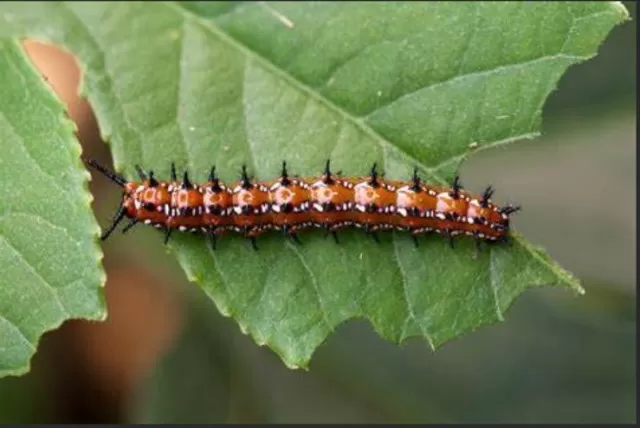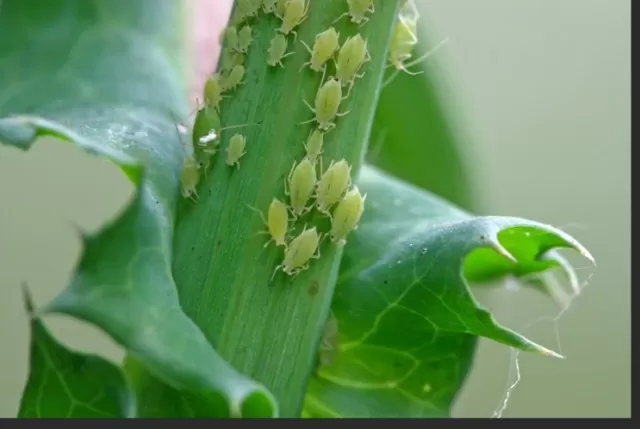Critter-Free Yard and Garden: Effective Tips to Implement. Amid the canvas of your exterior sanctuary, a symphony of moments beckons—a sunlit afternoon dedicated to nurturing the garden, an enchanting evening spent basking in the serenity of your yard. The allure of the great outdoors is boundless, offering a palette of rejuvenation and solace. However, within this harmonious tapestry, an intricate dance unfolds—a delicate balance between the invitation to rejuvenate and the uninvited guests drawn by the allure of your yard.
In the verdant expanse of your garden, a multitude of critters—some small, others more troublesome—find their way into your haven. Insects, rodents, and curious creatures are lured not by your gardening aspirations, but by the promise of sustenance and shelter. They traverse your landscape with little regard for the mess they leave or the havoc they sow.
The delicate equilibrium between coexistence and intrusion becomes the fulcrum of your outdoor narrative. As you strive to cultivate tranquility, remember that your role is that of an orchestrator—invoking measures that ensure harmony between the natural world and your cultivated haven.
Understanding the motivation behind these visits is the first step towards resolution. Pests, whether seeking nourishment or a place to call home, adhere to their primal instincts. Your role is to curate an environment that disrupts their intentions while honoring the sanctity of nature. Employing eco-friendly strategies to deter unwanted critters, such as utilizing safe repellents and securing potential entry points, bridges the gap between pest management and ecological mindfulness.
As you navigate this delicate dance, remember that the vibrancy of your garden coexists with the vibrancy of life. The pursuit of serenity does not have to equate to eradication; instead, it’s an invitation to intertwine with the rhythms of the natural world. With intention and discernment, you weave a narrative that transcends disturbances and invites tranquility—an ode to the art of nurturing both your haven and the creatures that share it.
Caterpillars: A Delicate Balance of Beauty and Garden Woes

Welcoming caterpillars into your garden brings the enchanting promise of witnessing their transformation into exquisite butterflies like the iconic monarch.
However, amidst this captivating spectacle, the world of caterpillars also encompasses less glamorous characters such as the ravenous green budworm. These notorious leaf-munchers have a particular fondness for delicacies like rose leaves, geraniums, petunias, and even wholesome leafy green vegetables.
In gardens where the scale tips toward an infestation of these persistent pests, finding a solution becomes paramount.
Enter Bacillus thuringiensis (Bt), a remarkable bacterium that offers a targeted remedy. Distinguishing itself by its specificity for caterpillars, Bt presents a powerful tool for gardeners grappling with these unwelcome visitors.
Available in both spray and powder forms, this treatment stands as a testament to effective biological pest control.
One of the most remarkable aspects of Bacillus thuringiensis is its precision.
When applied every two weeks, it tactfully eliminates caterpillar populations while sparing other creatures, including beneficial insects, and safeguarding the well-being of humans. With the accessibility of Bt in most nurseries and home improvement centers, garden enthusiasts possess a valuable ally in their ongoing battle against the voracious appetite of caterpillars.
In the delicate dance between nurturing the captivating life cycles of caterpillars-turned-butterflies and protecting the vitality of one’s garden, Bacillus thuringiensis emerges as a vital instrument.
By harnessing the potential of this bacteria, gardeners can cultivate a harmonious coexistence with caterpillars, cherishing their beauty while mitigating the challenges they present.
The Ecological Significance of Ants: More Than Just Tiny Inhabitants
In the intricate tapestry of backyard ecosystems, ants emerge as unsung heroes, playing multifaceted roles that often go unnoticed.
With hues ranging from black to red, these tiny creatures contribute indispensably to the health and balance of their surroundings. Beyond their diligent foraging and busy trails, ants wield a host of ecological responsibilities that ripple through the natural world.
Anchored by their instinctual behavior, ants assume a vital role in pest control.
By preying on the eggs of various insect species, they act as a natural line of defense, curbing critter populations and maintaining equilibrium within the ecosystem. Moreover, their industrious digging and burrowing actions serve to aerate the soil, enhancing its fertility and supporting the growth of plants.
Yet, their contributions extend far beyond the subterranean realm.
Ants, often unobtrusively, engage in pollination, facilitating the reproduction of flowering plants and contributing to the biodiversity of local flora. Astonishingly, some plant varieties have developed a symbiotic relationship with ants, enlisting them as protectors against herbivorous threats, a testament to the intricate interconnections within nature.
Before hastily resorting to crushing or spraying, it is crucial to recognize the intricate web of life that ants contribute to.
Their diligent efforts not only sustain the health of the environment but also enable humans to thrive. However, there are times when ants might encroach upon human spaces, especially near outdoor dining areas.
In such instances, the onus often lies with us. Neglecting to remove food remnants from the yard or promptly cleaning up after meals can inadvertently draw these six-legged visitors to our relaxation zones.
In essence, understanding the remarkable roles that ants fulfill in our ecosystems can foster a harmonious coexistence between their world and ours.
By appreciating their ecological significance, we can better navigate the delicate balance between our comfort and their essential contributions, ultimately nurturing a thriving and interconnected natural realm.
Aphids: Unveiling the Tiny Garden Adversaries

In the delicate tapestry of garden life, aphids stand as both minuscule and mighty adversaries, casting shadows of destruction upon the very plants they inhabit.
With a kaleidoscope of colors including green, black, tan, and yellow, these diminutive insects are among the most prevalent and pernicious foes a gardener can encounter. Their voracious appetite for sap can wreak havoc on plants, with roses being a particular favorite.
Yet, their infestations extend beyond roses, often clustering on the tender new growth of beloved annual and perennial flowers.
Nature, however, offers an ingenious remedy to combat this miniature menace—ladybugs, the charming and unsuspecting predators that lurk within gardens.
While their dainty appearance might evoke human fondness, these seemingly delicate insects wield a ferocious appetite for aphids. Astonishingly, a solitary ladybug can single-handedly devour more than 50 aphids in a single day, making them a formidable weapon in the fight against garden marauders.
The solution to this natural dilemma often lies within garden centers, where ladybugs can be procured to serve as allies in the battle against aphids.
Ensuring their successful integration into the garden requires a mindful approach. Upon acquiring these beneficial insects, a misting of water provides them with necessary hydration.
A brief sojourn in the refrigerator prior to releasing them at dusk on the same day allows for a smooth transition.
Strategic placement is the key to unleashing the full potential of ladybug defenders.
By lightly moistening the aphid-ridden plant, and then situating the ladybugs at the plant’s base, gardeners can encourage their crawling ascent up the plant’s stalks. This technique effectively curtails the immediate dispersal of the ladybugs, promoting their predatory mission to rid the garden of aphids.
In the intricate dance of garden life, the battle against aphids finds an elegant solution in the collaboration between ladybugs and humans.
This interplay between nature and nurture not only safeguards the vitality of plants but also underscores the intricate interconnectedness of all living beings within the garden’s embrace.
Japanese Beetles: Gleaming Pests of Destructive Appetite
Adorned in a resplendent coat of iridescent green and copper, Japanese beetles exude an aesthetic allure that belies their potential for garden havoc.
These captivating insects, while visually striking, unveil a darker side as they wreak havoc on the foliage, lawns, shrubs, and vegetables they encounter. Their voracious appetite knows no bounds, capable of reducing once-thriving plants to mere shadows of their former selves.
In a destructive display of feeding, Japanese beetles can strip leaves down to their very essence, leaving behind skeletal remains that echo the toll of their insatiable hunger.
The juxtaposition of their beguiling appearance and the devastation they leave in their wake underscores the complex interplay between aesthetics and ecological balance.
To counter this formidable threat, a strategic approach is necessary.
As the morning sun casts its gentle glow, Japanese beetles rouse from their slumber, their movements leisurely and their defenses subdued. Armed with a bucket of Soapy Water, gardeners embark on a mission to mitigate the beetle menace.
During these early hours, the sluggish state of the beetles makes them easy targets; a simple knock into the soapy abyss of the bucket seals their fate, drowning them swiftly.
In the ongoing battle against Japanese beetles, this technique offers a humane and environmentally conscious solution.
By harnessing the beetles’ natural rhythms to one’s advantage, gardeners can curb their population without resorting to harsh chemicals or disruptive interventions. The subtle dance between human intervention and nature’s innate patterns serves as a testament to the delicate balance required to preserve the splendor of a garden while safeguarding its vitality.
Snails and Slugs: Tiny Pests, Swift Appetites

In the realm of garden intruders, snails and slugs emerge as deceptive adversaries.
Their sluggish movements belie their voracious appetites, capable of inflicting rapid devastation on tender plants, often leaving behind nothing more than skeletal remnants by morning. These seemingly innocuous creatures possess a stealthy prowess that demands attention from gardeners seeking to protect their green havens.
While a plethora of snail baits saturate the market, a simpler solution often suffices, especially for less severe infestations.
The remedy, surprisingly, lies within a shallow bowl brimming with beer—a modest yet effective approach that sidesteps the need for pricey alternatives. By placing this humble vessel near the areas of most frequent damage, gardeners initiate a subtle yet powerful strategy to combat these garden nibblers.
As night blankets the garden, the alluring scent of yeast wafts from the beer, drawing snails and slugs with irresistible charm.
Enchanted by the brew’s bouquet, they venture toward it, unaware of the impending peril. Once they embark on their liquid journey, their course leads them into the bowl.
However, this encounter with the seemingly harmless libation seals their fate, as the liquid’s embrace turns treacherous. Akin to sirens luring sailors to their doom, the yeast-laden beer beckons these tiny invaders into a watery abyss, effectively quelling their threat.
The battle against snails and slugs finds an unconventional yet successful solution in this beer-laden trap.
This technique underscores the art of garden management, proving that innovation and simplicity often go hand in hand. As gardeners harness the allure of yeast and liquid to their advantage, they achieve a delicate equilibrium between preserving the splendor of their landscapes and protecting their cherished flora from the insatiable appetites of these seemingly innocuous creatures.
*The information is for reference only.